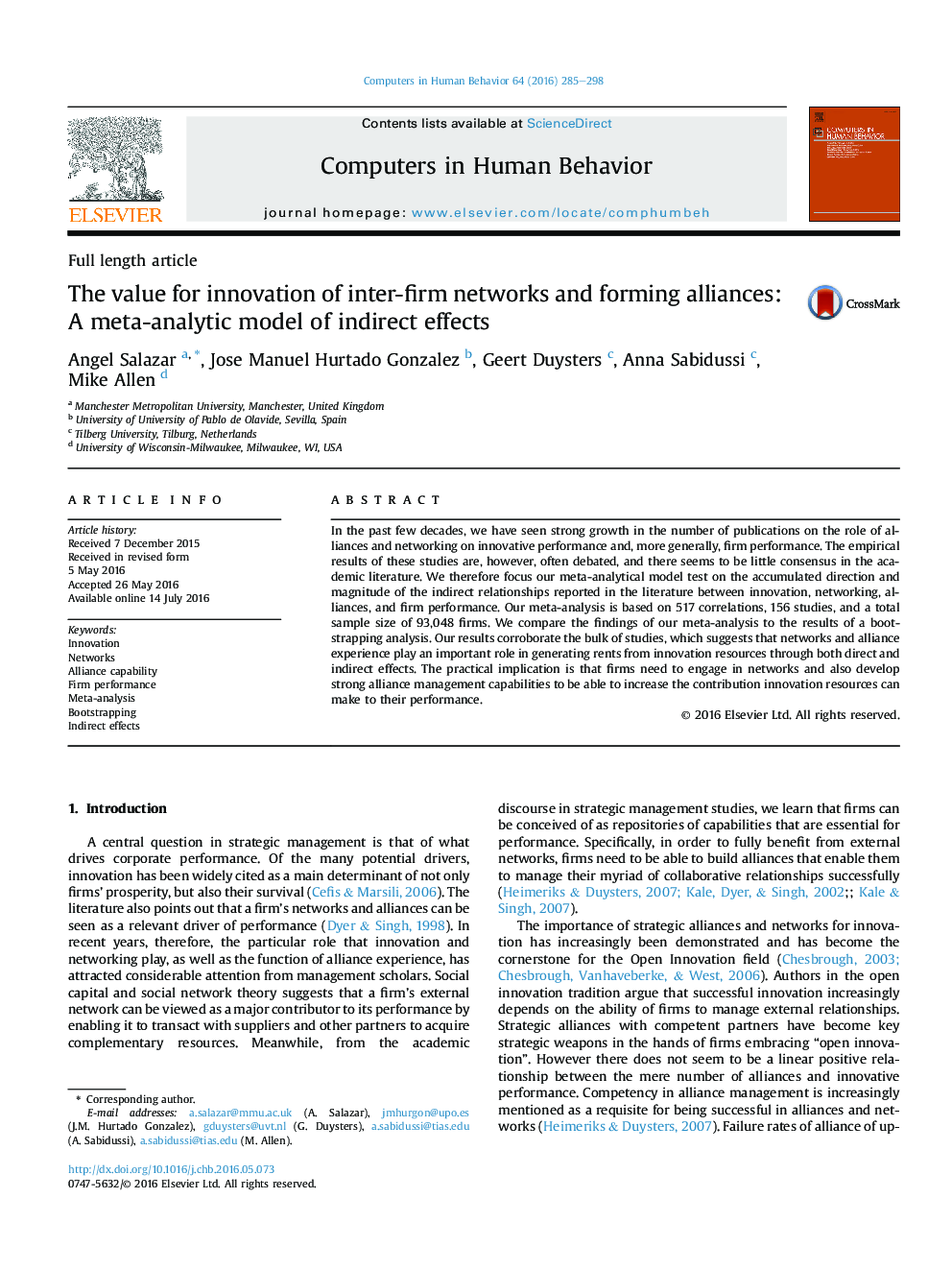| Article ID | Journal | Published Year | Pages | File Type |
|---|---|---|---|---|
| 6836499 | Computers in Human Behavior | 2016 | 14 Pages |
Abstract
In the past few decades, we have seen strong growth in the number of publications on the role of alliances and networking on innovative performance and, more generally, firm performance. The empirical results of these studies are, however, often debated, and there seems to be little consensus in the academic literature. We therefore focus our meta-analytical model test on the accumulated direction and magnitude of the indirect relationships reported in the literature between innovation, networking, alliances, and firm performance. Our meta-analysis is based on 517 correlations, 156 studies, and a total sample size of 93,048 firms. We compare the findings of our meta-analysis to the results of a bootstrapping analysis. Our results corroborate the bulk of studies, which suggests that networks and alliance experience play an important role in generating rents from innovation resources through both direct and indirect effects. The practical implication is that firms need to engage in networks and also develop strong alliance management capabilities to be able to increase the contribution innovation resources can make to their performance.
Keywords
Related Topics
Physical Sciences and Engineering
Computer Science
Computer Science Applications
Authors
Angel Salazar, Jose Manuel Hurtado Gonzalez, Geert Duysters, Anna Sabidussi, Mike Allen,
